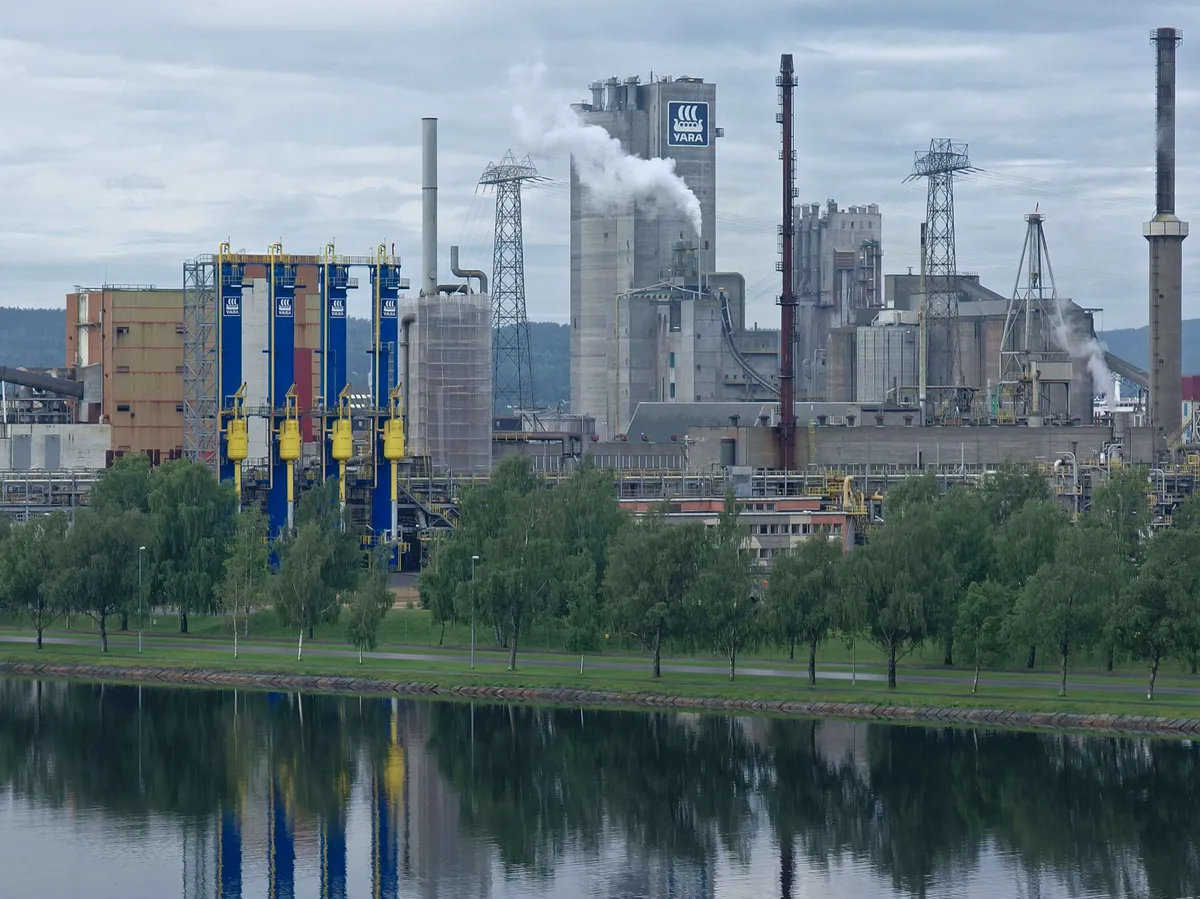The chemical industry and the energy industry in Europe are now canceling gigantic green hydrogen projects under contract, says the professional magazine Chemical & Engineering News as well as many news media.
At the end of October In this announced the cancellation of the 120 megawatt hydrogen electrolyzer planned for the Kilpilahti refinery in Porvoo. In practice, at the same time, a larger cancellation was announced in Norway, which has received less attention in Finland. Known as a fertilizer manufacturer Children cancels most of the 600 MW electrolyser, which would have been placed in the company’s home country of Norway.
The plant will not be canceled completely, but the unit planned for the Herøya industrial area in Porsgrunn on Norway’s Skagerrak coast will be reduced to 100 megawatts, or a fraction of the former, the Norwegian Broadcasting Company NRK specifies. Yara herself is not informed of his cancellation on his own initiative, unlike Neste, but according to the news, Yara’s management admits the cancellations are true.
The children in June The 24 megawatt pilot plant opened in Porsgrunn will remain in operation. This facility is large by the standards of pilot plants, but small by the scale of production of basic chemicals.
At the same time as the cancellation of the Porsgrunn plant, Yara decided, according to C&EN, to also shelve the green hydrogen plant it had planned for Sluiskil in the Netherlands. Quantum Commodity Intelligence information service news according to the Sluiskil plant would have been significantly smaller than the Porsgrunn plant.
Yara too still holding on About the blue hydrogen plant he planned for Sluiskil. Blue hydrogen refers to hydrogen extracted from fossil hydrocarbons, the CO₂ emissions of which are captured and embedded in the rock. In the case of Sluiskil, the carbon dioxide is loaded onto ships and pumped to a depth of 2.6 kilometers to the bottom of the North Sea.
In addition to Neste and Yara, there is also a German one Uniper and Norwegian Vianode have canceled or postponed the green hydrogen project, NRK and C&EN add. Vianode planned a 250 MW hydrogen plant that, like the Yara plant, would have been located on the Skagerrak coast.
Uniper’s plans would have been massive. News from the German newspaper Frankfurter Allgemeine Zeitung (pay) citing According to Clean Energy Wire Uniper planned to invest 8 billion euros in this sector by 2030. So far, however, there are so few customers that it is not worth it.
Blue hydrogen instead of green.
Yara is holding on to the blue hydrogen plant planned for the Netherlands. Blue hydrogen means fossil raw materials with CO2 capture.
TO BE: Yara
Assuming an energy efficiency ratio of 70 percent and a capacity factor of 95 percent in terms of operating time, Yara’s canceled 600 MW hydrogen project would mean approximately 90,000 tons of hydrogen per year. This can be calculated from the calorific value of hydrogen, 142 MJ/kg.
Similarly, Neste’s 120 MW plant would have corresponded to 18 kilotons per year. Yara’s ongoing 24 megawatt pilot plant produces approximately 3,500 tons of hydrogen annually.
“Insignificant”
According to C&EN, Yara currently thinks that green hydrogen plants are “low-value” or “low-value projects”. Yara considers the availability and price of green electricity to be problems.
“We are moving forward with products that make economic sense and generate income. We don’t make green investments just for their own sake,” comments Yara’s CEO Tore Holsether QCI:n wood.
C&EN says that Holsether updates that the legislation “punishes” those companies that are at the forefront of green hydrogen production. What he meant by this was not clear from the news.
On the other hand, Yara’s long-term strategic goal of reducing carbon dioxide emissions has not changed, says the company’s decarbonization policy manager Edina Ringdal Wickholm says to NRK.
The final product is ammonia
As a fertilizer company, Yara would have used green hydrogen to produce ammonia. A hydrogen plant with a capacity of 600 megawatts, or 90,000 t/y, corresponds to approximately 500,000 tons of ammonia per year.
The nitrogen compound ammonia is industrially synthesized in the Haberin-Bosch process from its elements hydrogen and nitrogen. Ammonia is the raw material of industrial nitrogen fertilizers, which can with good reason be called the world’s most important chemical.
Without industrial nitrogen fertilization, the whole world would only be able to support 2.5–3 billion people. In other words, without industrial ammonia, about two-thirds of people would starve to death.
Although ammonia has received a lot of attention as a green fuel for marine transport, this application is absolutely marginal tinkering compared to ammonia’s main purpose in the fertilizer industry.
Ammonia plants capacity in the world is currently about 240 million tons per year. In practice, production is well over 180 million tons.
